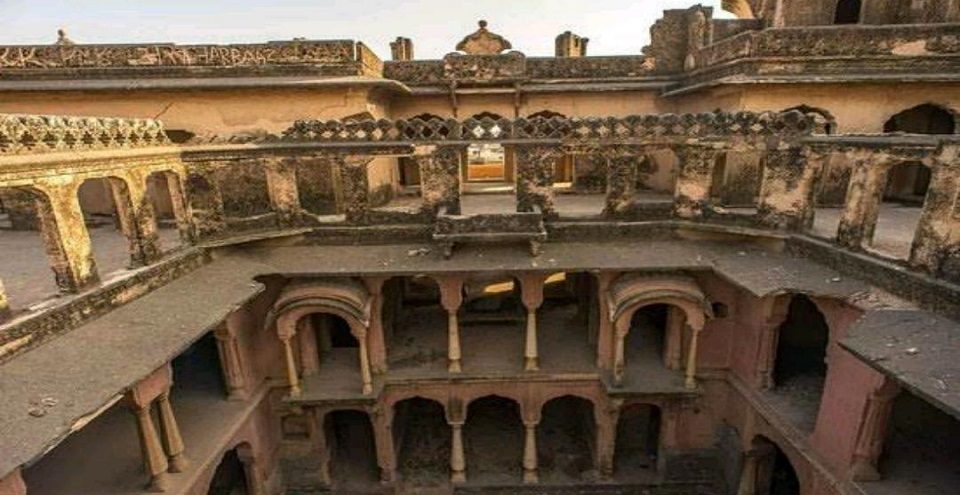
Khetri Mahal: A Majestic Heritage in Shekhawati
Located in the heart of the Shekhawati region in Rajasthan, India, Khetri Mahal is a stunning example of historical architecture and cultural richness. Known as the “Wind Palace” or “Khetri Palace,” this majestic building offers a glimpse into the grandeur of the past and the artistic achievements of the region.
Historical Background
Khetri Mahal was constructed by Maharaja Kirat Singh, a ruler of the Khetri State, in the 18th century. The palace was designed to serve as a summer retreat and administrative center for the royal family. It reflects the opulence and architectural style of the time, showcasing the influence of Rajputana and Mughal designs.
Architectural Features
Distinctive Design:
- Wind Palace: The name “Khetri Mahal” translates to “Wind Palace,” a reference to its unique architectural design intended to facilitate natural ventilation. The palace features open courtyards and spacious rooms, designed to capture and circulate the cool breeze, providing relief from the intense heat of Rajasthan.
Intricate Carvings:
- The palace is renowned for its detailed carvings and ornate artwork. The walls and ceilings are adorned with intricate frescoes and traditional motifs, reflecting the artistic craftsmanship of the era. These decorations depict various themes, including royal life, mythology, and nature.
Elegant Arches and Pillars:
- The palace showcases elegant arches and finely crafted pillars, which are characteristic of Rajput architecture. The use of these architectural elements adds to the palace’s grandeur and aesthetic appeal.
Courtyards and Gardens:
- Khetri Mahal includes beautifully designed courtyards and gardens that enhance the palace’s serenity and charm. The open spaces are landscaped with traditional Rajasthani plants and features, providing a tranquil environment for relaxation and reflection.
Jharokhas (Balconies):
- The palace features decorative jharokhas, or balconies, which offer panoramic views of the surrounding landscape. These balconies are intricately designed and provide a vantage point to enjoy the scenic beauty of Shekhawati.
Cultural Significance
Khetri Mahal is not only an architectural marvel but also a cultural treasure. It stands as a symbol of the Shekhawati region’s rich heritage, showcasing the fusion of Rajput and Mughal architectural styles. The palace offers insights into the lifestyle and artistic preferences of the royal family and the broader cultural milieu of the time.
Practical Information for Visitors
Timing: Khetri Mahal is typically open to visitors during the day. It is advisable to check the specific visiting hours or contact local authorities for updated information before planning your visit.
Dress Code: Modest and comfortable attire is recommended when visiting the palace. Since the site is historical, visitors should also be respectful of the surroundings.
Photography: Photography may be allowed in certain areas of the palace, but it is advisable to inquire about the rules upon arrival. Some areas may have restrictions to preserve the site’s integrity.
Respect: Observing respectful behavior is crucial. This includes refraining from touching the artworks and carvings, maintaining silence, and following any guidelines set by the site authorities.
Getting There
Khetri Mahal is located in the Shekhawati region of Rajasthan, which is accessible by various modes of transportation:
By Road: The palace can be reached by road from major cities in Rajasthan. You can travel to Khetri by taxi or bus from cities such as Jaipur (approximately 200 kilometers away) or Delhi.
By Rail: The nearest railway station to Khetri Mahal is in Jhunjhunu. From Jhunjhunu, you can hire a taxi or use local transport to reach the palace.
By Air: The nearest airport to Shekhawati is in Jaipur, approximately 200 kilometers away. From the airport, you can travel to Khetri Mahal by road.
Khetri Mahal stands as a testament to the architectural and cultural grandeur of the Shekhawati region. With its distinctive design, intricate carvings, and serene courtyards, the palace offers a captivating glimpse into the past. A visit to Khetri Mahal provides an opportunity to experience the historical and artistic heritage of Rajasthan, making it a must-see destination for history enthusiasts and cultural explorers.
